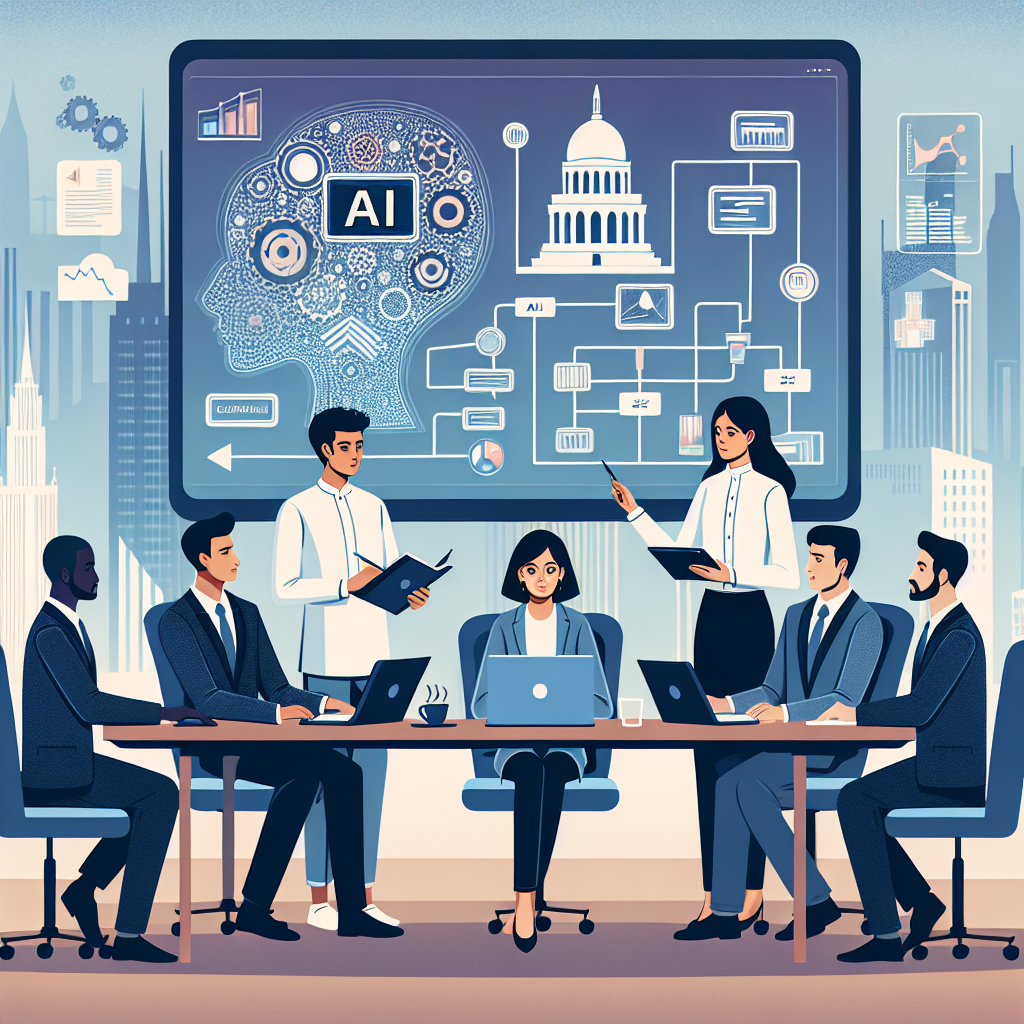In recent years, the use of artificial intelligence (AI) in government services has become increasingly prevalent. From streamlining administrative processes to improving citizen services, AI has the potential to revolutionize how governments operate. However, integrating AI into government services comes with a unique set of challenges. In this article, we will explore some of the key challenges facing governments as they seek to adopt AI technologies and provide potential solutions to overcome them.
Challenges of Integrating AI in Government Services
1. Data Privacy and Security: One of the biggest challenges in implementing AI in government services is ensuring the privacy and security of sensitive data. Government agencies collect vast amounts of personal information from citizens, ranging from social security numbers to medical records. This data must be protected from cyber attacks and breaches to prevent unauthorized access and misuse.
Solution: Governments can address data privacy and security concerns by implementing robust encryption protocols, conducting regular security audits, and ensuring compliance with data protection regulations such as GDPR and HIPAA. Additionally, agencies can utilize AI technologies such as differential privacy and federated learning to anonymize and protect sensitive data while still allowing for analysis and insights.
2. Bias and Discrimination: Another challenge in integrating AI in government services is the risk of bias and discrimination in decision-making processes. AI algorithms are only as good as the data they are trained on, and if the data contains biases or inaccuracies, the AI system may produce biased or discriminatory outcomes.
Solution: To mitigate bias and discrimination in AI systems, governments can implement transparency and accountability measures. This includes conducting regular audits of AI algorithms, ensuring diversity in training data sets, and providing explanations for automated decisions. Additionally, agencies can establish oversight committees and ethics boards to review AI applications and ensure fairness and equity in government services.
3. Lack of Skills and Expertise: Many government agencies lack the technical expertise and resources needed to successfully implement AI technologies. Building and maintaining AI systems requires specialized knowledge in data science, machine learning, and computer programming, which may be in short supply within government organizations.
Solution: Governments can address the skills gap by investing in training programs and partnerships with academic institutions and private sector organizations. By providing employees with opportunities to learn and develop AI skills, agencies can build internal capacity and expertise to support the integration of AI in government services. Additionally, governments can leverage external consultants and vendors to provide technical support and guidance during the implementation process.
4. Resistance to Change: Implementing AI in government services often requires significant changes to existing processes and workflows, which can meet resistance from employees and stakeholders. Some may be skeptical of AI technologies and fear that automation will lead to job loss or reduced quality of services.
Solution: To overcome resistance to change, governments can engage with employees and stakeholders early in the implementation process and communicate the benefits of AI technologies. By involving staff in decision-making and providing training and support, agencies can help employees adapt to new technologies and processes. Additionally, governments can pilot AI projects in small-scale environments to demonstrate the value and impact of automation before scaling up across the organization.
5. Cost and Resource Constraints: Implementing AI in government services can be costly and resource-intensive, requiring investments in technology infrastructure, data storage, and personnel. Many government agencies operate under tight budget constraints and may struggle to secure the necessary funding for AI initiatives.
Solution: Governments can address cost and resource constraints by prioritizing AI projects that offer the greatest potential for efficiency gains and cost savings. By conducting cost-benefit analyses and aligning AI initiatives with strategic priorities, agencies can make a compelling case for investment in AI technologies. Additionally, governments can explore public-private partnerships and collaborations with other agencies to share resources and expertise, reducing the financial burden of AI implementation.
FAQs
Q: How can governments ensure that AI systems are transparent and accountable in decision-making processes?
A: Governments can promote transparency and accountability in AI systems by implementing measures such as algorithm audits, explainable AI techniques, and oversight committees. By providing explanations for automated decisions and allowing for appeals and reviews, agencies can build trust and confidence in AI technologies.
Q: What are some examples of successful AI implementations in government services?
A: Some examples of successful AI implementations in government services include chatbots for citizen services, predictive analytics for law enforcement, and fraud detection systems for benefit programs. These AI applications have helped streamline processes, improve efficiency, and enhance service delivery for citizens.
Q: How can governments address concerns about bias and discrimination in AI systems?
A: Governments can mitigate bias and discrimination in AI systems by ensuring diversity in training data sets, conducting regular audits of algorithms, and providing explanations for automated decisions. By promoting fairness and equity in AI applications, agencies can build trust and credibility with citizens and stakeholders.
Q: What role can citizens play in shaping the future of AI in government services?
A: Citizens can play a crucial role in shaping the future of AI in government services by providing feedback, participating in consultations, and advocating for transparency and accountability in AI systems. By engaging with citizens and soliciting their input, governments can ensure that AI technologies are used responsibly and ethically to benefit society as a whole.
In conclusion, integrating AI in government services presents a unique set of challenges, from data privacy and security to bias and discrimination. However, by addressing these challenges with transparency, accountability, and collaboration, governments can harness the power of AI to improve efficiency, enhance service delivery, and better serve citizens. By investing in training and expertise, engaging with employees and stakeholders, and prioritizing cost-effective solutions, governments can overcome the obstacles to AI integration and unlock the full potential of automation in public services.

